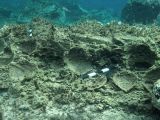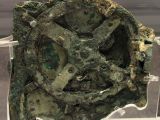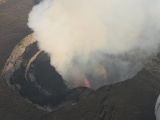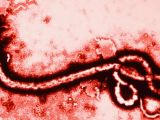I hate to break it to you, but yet another more or less glorious week has come to an end. On the downside, we’ve all gotten a wee older. On the bright side, we know more about the world we live in than we did just a few days ago.
For those of you who were rather busy and didn’t get to keep up to date with the news, but also for those in the mood for a recap, here are this week’s most important pieces of science news and announcements.
10. Scientists found a new way to keep cheese fresh
This week, scientists in Spain announced the development of a new type of coating for cheese that they say can help keep it fresh for longer. True, such coatings already exist, but the thing about this new one is that it is edible and quite tasty.
The list of ingredients for this novel cheese coating includes oregano and rosemary essential oils, and a compound dubbed chitosan, which is extracted from crustacean shells. These ingredients were selected because they have antimicrobial properties.
Thus, the scientists behind this research project claim that, when added to soft cheese, their coating keeps fungus and all sorts of other microorganisms at bay. What’s more, the coating is said to prevent the loss of water at the surface.
9. E-cigarettes found to contain loads of carcinogens
Having carried out a series of experiments, researchers found that e-cigarettes are by no means as safe as people think them to be. On the contrary, they can contain loads of toxic chemical compounds known to cause cancer and other health trouble.
For instance, the e-cigarettes tested as part of this investigation were found to contain formaldehyde and acetaldehyde. What’s more, one of the brands the researchers studied was found to contain about 10 times more carcinogens than regular smokes do.
The reason this piece of news isn’t further down on our list is that this study was carried out in Japan, where e-cigarettes are not yet regulated. Mind you, this does not mean that the e-cigarettes marketed in other countries are safe.
8. Underwater Pompeii discovered in Greece
While exploring the waters off the coast of the island of Delos in Greece, underwater archeologists came across the remains of a settlement dating back to the 1st century BC. Interestingly enough, they first assume that they were dealing with the remains of a port.
The settlement lies at a depth of about 6 feet (1.83 meters). Researchers have thus far documented the presence of several large stones that they say were once part and parcel of rather impressive buildings. They’ve also discovered pots and even an oven.
The reason this 1st century settlement found off the coat of Greece’s Delos island is referred to as an underwater Pompeii is that workshops such as the ones discovered in this region have until now only been documented at the site of the city of Pompeii.
7. DNA samples traveled to space and back
As it turns out, DNA is way more resilient than anyone would ever expect it to be. In a nutshell, this molecule, which encodes the genetic instructions each and every organism needs in order to function and grow, can withstand space conditions.
This discovery was made by a team of researchers in Switzerland, who smeared some DNA samples on a TEXUS-49 rocket and then sent them to space. After the rocket’s return to Earth, they checked to see what was left of these samples.
Much to their surprise, the researchers found that the DNA not only survived the launch, the trip per se and the re-entry into our planet’s atmosphere, but was still able to transfer genetic information to bacterial or connective tissue cells once its little adventure was done with.
6. World’s oldest computer found to be older than believed
Back in the 1900s, a group of sponge divers came across an odd device that our ancestors used to keep tabs on solar cycles. The device, commonly referred to as the Antikythera mechanism, is hailed as the world’s oldest computer.
What’s interesting is that, when they first got busy studying this device, researchers said that it was designed and put together sometime between 150 BC and 100 BC. However, recent evidence indicates that the Antikythera mechanism is considerably older.
More precisely, it appears that the device was put together around the year 205 BC. This makes it well over 2,000 years old. It is said that, in order to create the Antikythera mechanism, the ancient Greeks relied on arithmetical methods of Babylonian origin.
5. Lava lake documented atop volcano in Africa
By the looks of it, a volcano in Africa currently has a lava lake bubbling deep inside one of its craters. The volcano in question goes by the name of Nyamuragira and it last erupted back in November 2011. At that time, powerful earthquakes and explosions were documented in the area.
The lava lake now resting atop the Nyamuragira volcano in the Democratic Republic of the Congo sits at the bottom of a crater measuring about 1,650 feet (approximately 500 meters). It appears and disappears, depending on how much lava is coming out the ground.
Still, specialists expect that, sometime in the not-too-distant future, the lake will become a permanent one. The only problem is that, because of all the toxic gases that will surely be hovering over it, we won’t get to enjoy a picnic or simply lie in the sun on its banks.
4. Vampires in Poland found to be cholera victims
Some time ago, archeologists exploring a site in Poland unearthed the bodies of six people that were horribly desecrated after death. Specifically, these individuals were buried with knives around their throats and stones under their jaw.
As it turns out, these people were thus abused after they died because they were believed to be vampires. According to the specialists who found them, the knives were placed around their throats to decapitate them, were they to try and leave their grave, and the rocks served to keep them from feeding on others.
Needless to say, these people were not vampires. The reason they were labeled as such was that they were among the first to be killed by a cholera epidemic that hit northwestern Poland sometime around the 17th or the 18th century.
3. Ebola vaccine successfully tested on people
This week, researchers announced that, having carried out a series of experiments, they found an experimental Ebola vaccine to be safe for use in humans. What’s more, the vaccine was found to be effective, meaning that it managed to trigger an immune response.
The vaccine in question comprises genetic material obtained from two distinct species of the Ebola virus, i.e. Sudan and Zaire. This Ebola genetic material is delivered with the help of a carrier virus known to the scientific community as the chimpanzee-derived adenovirus 3.
In a paper detailing these experiments, scientists explain that they have so far administered the vaccine to a total of 20 volunteers between the ages of 18 and 50. The participants in this study all started producing Ebola antibodies following inoculation.
2. Turkeys could help us fight all sorts of infections
Most people think of turkeys as no more and no less than a delicious dinner. Still, scientists say that, according to recent evidence, it could be that these birds hold the key to treating all sorts of infectious diseases.
Thus, it appears that a strain of bacteria that lives inside these birds produces a very powerful antibiotic. The bacterium is known to the scientific community as Strain 115 and the antibiotic it produces is dubbed MP1.
Scientists say that, as far as structure goes, this antibiotic produced by Strain 115 is stunningly complex. Apparently, this is precisely why specialists are yet to figure out a way to use it to fight infections that come to affect people.
1. Earth found to have an invisible shield
Some time ago, in 1958, brainiacs used data obtained with the help of the US’ Explorer 1 satellite to document the existence of two zones of high-energy particles around our planet. These zones are now known as the Van Allen radiation belts.
This week, scientists announced the discovery of a so-called Star Trek-like invisible shield encircling our planet. This shield hovers over our planet at a height of about 7,200 miles (roughly 11,600 kilometers), and keeps high-energy particles from reaching Earth’s atmosphere.
For the time being, researchers are unable to say how and why our planet came to have this shield all around it. What they do know is that, if it were missing, electrons known to damage space systems and satellites would have no trouble reaching us.
“It’s almost like theses electrons are running into a glass wall in space. Somewhat like the shields created by force fields on Star Trek that were used to repel alien weapons, we are seeing an invisible shield blocking these electrons. It’s an extremely puzzling phenomenon,” explains researcher Daniel Baker.
So, these are this week’s most important pieces of science news and announcements. Here’s hoping you’ve found them to your liking and do join us again next week for yet another round-up.

 14 DAY TRIAL //
14 DAY TRIAL // 









